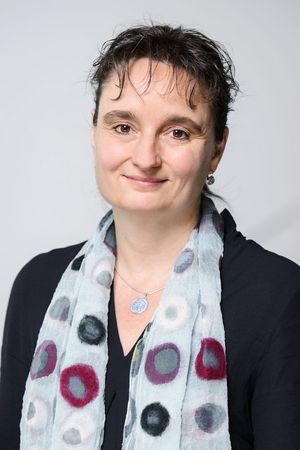Prof. Dr. Silke Leimkühler
Research interests
- molybdoenzymes
- molydenum cofactor in bacteria and humans
- iron sulfur cluster biosynthesis
- sulfur insertion into biomolecules
- tRNA thiolation
Research Units in UniSysCat
Awards (selection)
| 2018 | Visiting Professor at the Aix-Marseille Université |
| 1998 | PhD Award, U Bochum |
Publications (selection)
T. Zeng, S. Leimkühler, U. Wollenberger, V. Fourmond, Transient catalytic voltammetry of sulfite oxidase reveals rate limiting conformational changes, Journal of the American Chemical Society 2017, 139, 11559-11567.
R. Cazelles, N. Lalaoui, T. Hartmann, S. Leimkühler, U. Wollenberger, M. Antonietti, S. Cosnier, Ready to use bioinformatics analysis as a tool to predict immbilisation strategies for protein direct electron transfer (DET), Biosensors & Bioelectronics 2016, 85, 90–95.
T. Hartmann, P. Schrapers, T. Utesch, M. Nimtz, Y. Rippers, H. Dau, M. A. Mroginski, M. Haumann, S. Leimkühler, The Molybdenum active site of formate dehydrogenase is capable of catalyzing C-H bond cleavage and oxygen atom transfer reactions, Biochemistry 2016, 55, 2381–2389.
S. Reschke, S. Mebs, K. G. V. Sigfridsson-Clauss, R. Kositzki, S. Leimkühler, M. Haumann, Protonation and sulfido versus oxo ligation changes at the molybdenum cofactor in xanthine dehydrogenase (XDH) variants studied by X-ray absorption spectroscopy, Inorganic Chemistry 2017, 56, 2165–2176.
A. Hahn, C. Engelhard, S. Reschke, C. Teutloff, R. Bittl, S. Leimkühler, R. Risse, Structural insights into the incorporation of the Mo cofactor into sulfite oxidase from site-directed spin labeling, Angewandte Chemie International Edition 2015, 54, 11865–11869.
C. Coelho, A. Foti, T. Hartmann, T. Santos-Silva, S. Leimkühler, M. J. Romao, Structural insights into xenobiotic and inhibitor binding to human aldehyde oxidase, Nature Chemical Biology 2015, 11, 779–783.
P. Schrapers, T. Hartmann, R. Kositzki, H. Dau, S. Reschke, C. Schulzke, S. Leimkühler, M. Haumann, Sulfido and cysteine ligation changes at the molybdenum cofactor during substrate conversion by formate dehydrogenase (FDH) from Rhodobacter capsulatus, Inorganic Chemistry 2015, 54, 3260–3271.
S. Reschke, D. Niks, H. L. Wilson, K. G. V. Sigridsson, M. Haumann, K. V. Rajagopalan, R. Hille, S. Leimkühler, Effect of exchange of the cysteine molybdenum ligand with selenocysteine on structure and function of the active site in human sulfite oxidase, Biochemistry 2013, 52, 8295–8303.
S. Reschke, K. G. V. Sigfridsson, P. Kaufmann, N. Leidel, S. Horn, K. Gast, C. Schulzke, M. Haumann, S. Leimkühler, Identification of a bis-molybdopterin intermediate in molybdenum cofactor biosynthesis in Escherichia coli, Journal of Biological Chemistry 2013, 288, 29736–29745.
T. Hartmann, S. Leimkühler, The oxygen-tolerant and NAD+-dependent formate dehydrogenase from Rhodobacter capsulatus is able to catalyze the reduction of CO2 to formate, FEBS Journal 2013, 280, 6083–6096.

